Jelly Rolls > Speed, Power, Flow
Worlds collide, and ‘Frique flags fly with M. Feb’s latest RAEN release
Surfing is music, and Michael February, a maestro.
But not just of any genre – his stylings on a surf craft sing resoundingly of the feral, free-flowing, time-is-nothing-but timing is everything genre that is Jazz (the acid kind, to be precise).
Close your eyes (figuratively) and envision it: An arcing high line is the reaching, resonant tenor of a saxophone. A staccato kick stall is the lightning-quick tip of a hi-hat. A rollercoaster run across the face of a wave is the steady, pumping trill of the Hammond organ. And surfing’s inherent improvisation and innate rhythmic connection are, simply put, everything else.
The fundamentals that comprise each discipline – sound, and surfing – are parallel, especially when you consider the fact that both are energetically dependent on wavelengths and vibrational forces.
To fully appreciate the globally-embraced musical genre and its intrinsic connection to this thing ‘we like’, a deeper cut must be made into history’s sonic backlogs – specifically to the American South at the turn of the twentieth century.
This was the setting for a musical meet-cute of sorts when Jazz (variably known at the time as jas, jass, jasz, or jaz) itself was spawned from a cultural confluence of European classical and big-band techniques, and the writhing, rhythmic folk sounds, and African-imported spirituals filling the air at the time.
This unlikely pairing, representing polar opposite ends of the ambient spectrum (cerebral severity and spontaneous expression, respectively) synchronized, became what is now considered one of the most important artistic developments of the era.
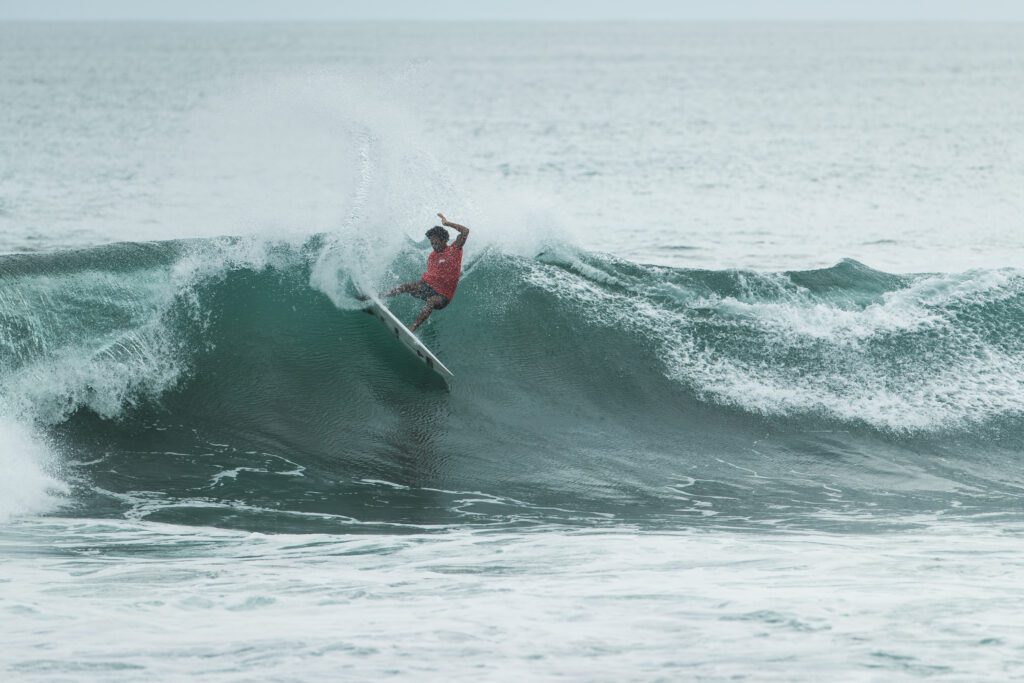
As time grooved on, so too did the meeting and melding of musical genres around the world and throughout Africa especially, with striking verve. Over the next half-century, by incidence of waning imperial rule, increased coastal trade, national conflict, and yet another British invasion (this time of a more mop-topped nature than a monarchic one), derivative sub-genres and sounds of a now bygone Biafran era emerged.
By the 1970s, the evolutionary soundscape included the likes of Juju, High-Life, and Afrobeat, followed by Funk and Psychedelia. Each acoustic offspring moved to its own uniquely patterned beat and carried forth attributes of its euphonic forebears.
With this in mind, it becomes more evident the influence these complex rhythms have impressed on Mr. February’s route to waveriding, as well as on his level of swag and personal style choices. These tastes, adjoining the dichotomous dynamics of intellect and instinct are reflected in two new sunglass silhouettes, collaboratively designed with RAEN. Appropriately named, the collection – dubbed Zafrique Ensemble – is a wearable marriage of impassioned expression with exacting craftsmanship.
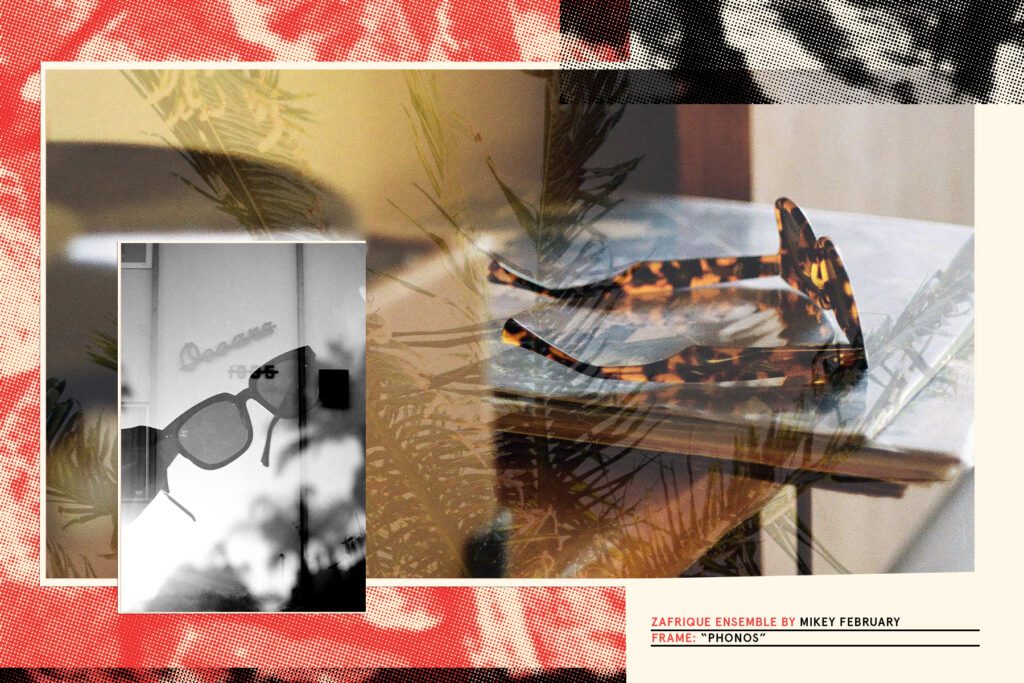
Phonos is an au fait take on a timeless profile, offering a wider fit without detracting from its sleekness. Rock it in classic black or in one of Raen’s standout acetate takes.
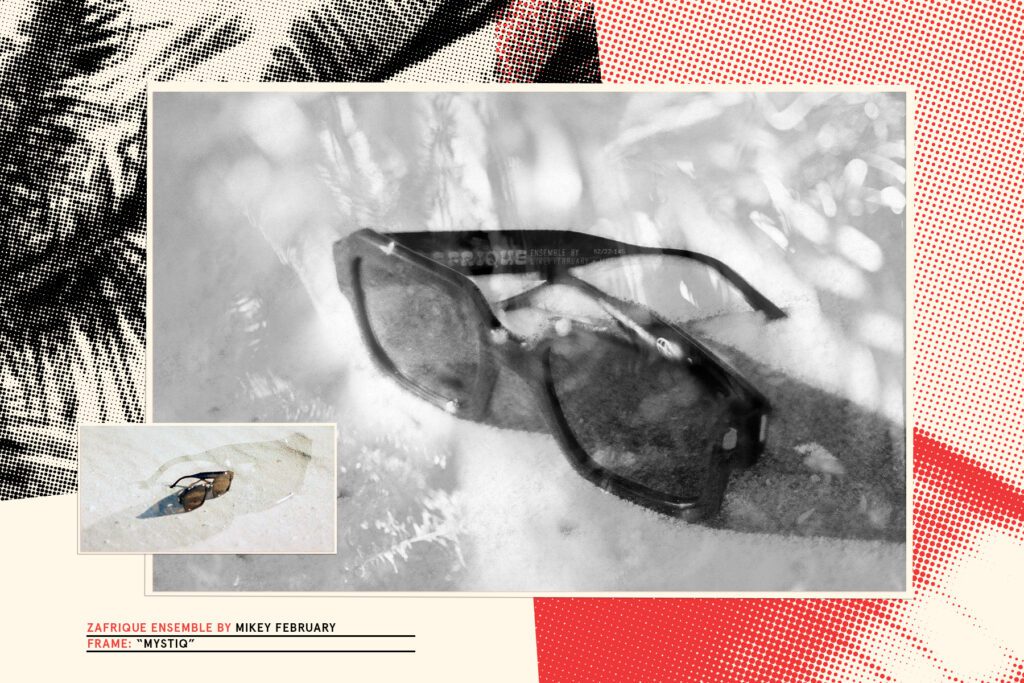
Mystiq balances oversized eccentricity with buffered, languid curvature. Designed with a hint of disco chic, for the future of folks who choose to intuit their own drum beat and are just a little bit outré.
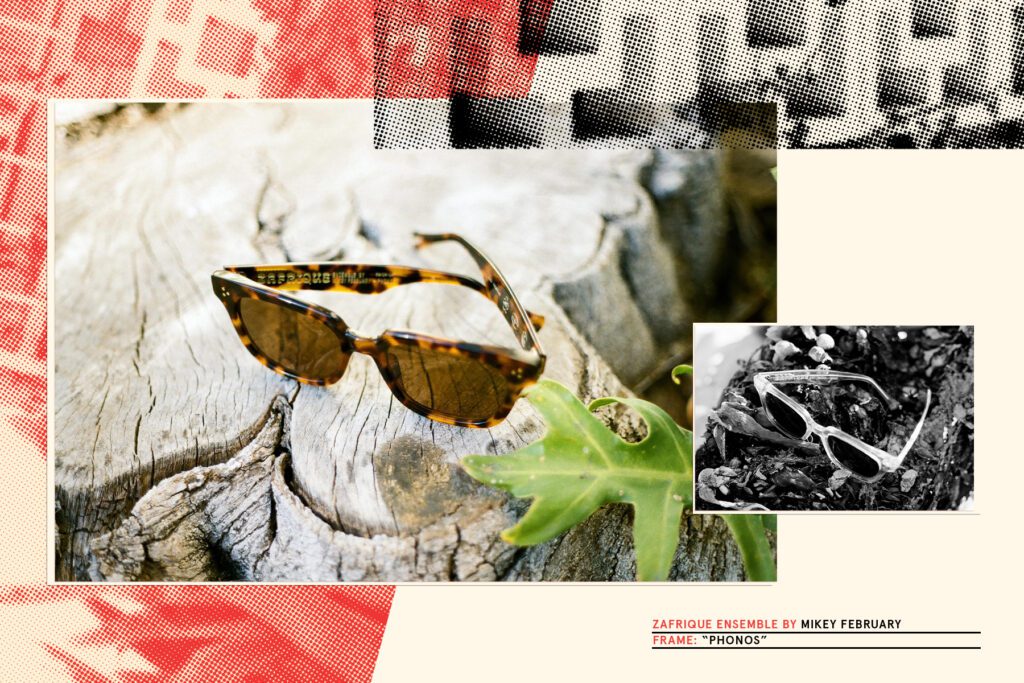
Finally, ‘Huru‘ is Mikey Feb’s signature colorway, now in its second release with the Southern California-based eyewear brand. Literally meaning “free” or “uninhibited” in Swahili, this bold expression has now been expanded across several best-selling styles, including Myles and Remmy, among others.
Whether or not you consider wave-sliding to be the newest sub-genre of the jazz’s eclectic familial tree, you can still enjoy the fruit of its inspired extensions in the form of Mikey’s fluidly drawn liquid lines, and the much more tangible sonic souvenirs encapsulated in the Zafrique Ensemble.
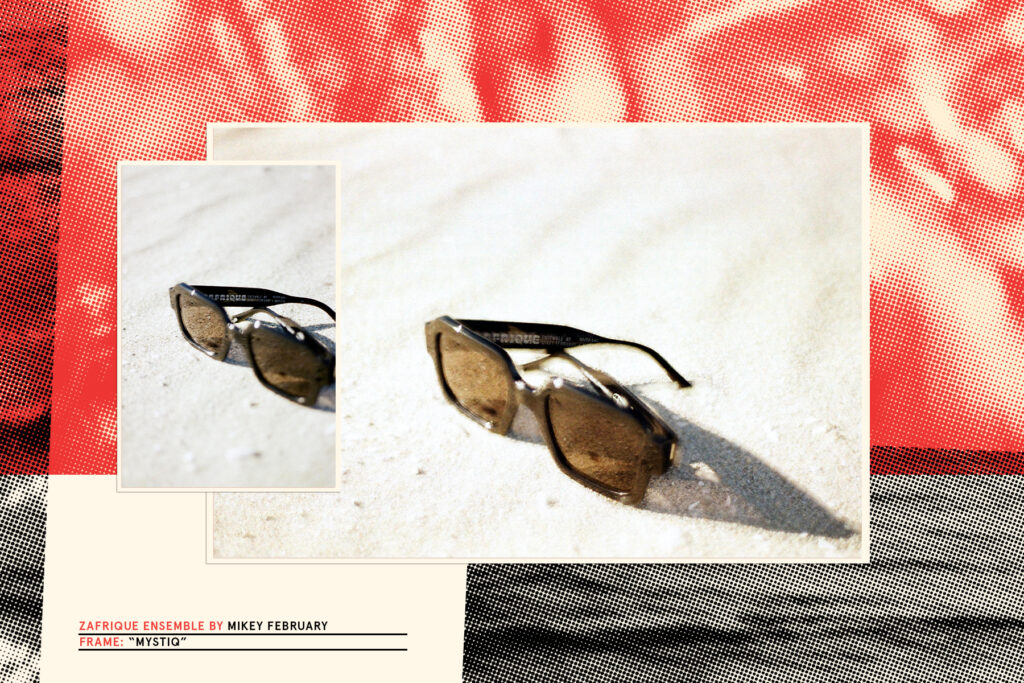
Shop the full collection at RAEN.com.


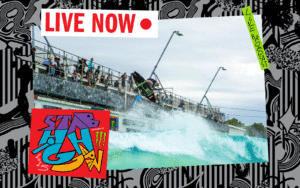
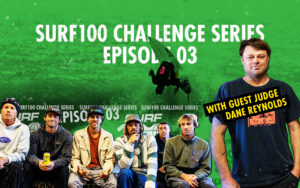









Comments
Comments are a Stab Premium feature. Gotta join to talk shop.
Already a member? Sign In
Want to join? Sign Up